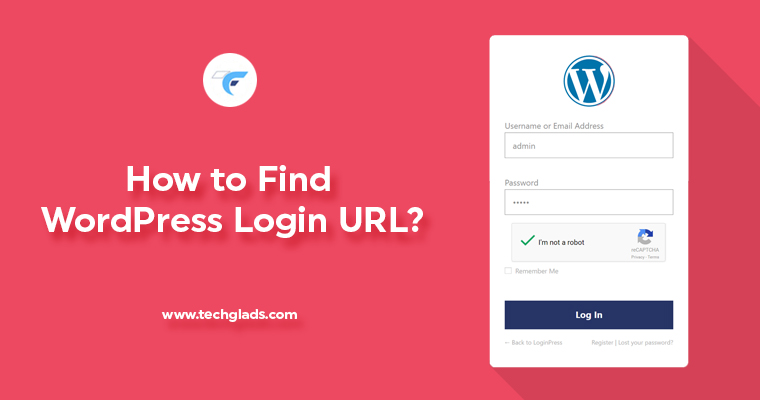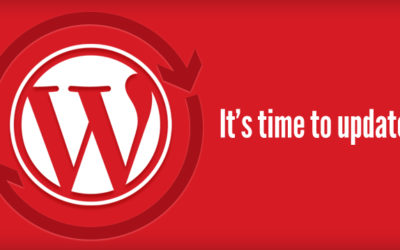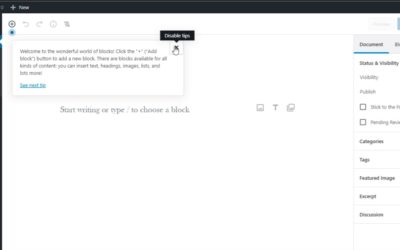WordPress is one of the most used & easy to use Content Management System with a user-friendly interface. As WordPress is a free and open source software, most of the people will be using & installing it by themselves. But once after installing the WordPress CMS for their website, they used to forgot it. Every time, when they try to login into WordPress they stuck up in finding the Login URL. If you are such a user, then this article will help you in finding the right URL & also will help to keep it remembered always.
Why you need WordPress Login URL?
If you have installed the WordPress Content Management System and If you want to go inside the WordPress Dashboard, then you must log in into the site. If you are a Website owner, you are supposed to have full control over your website. So to make the changes, Updates or any kind of modification, only the authorized user or admin can do. To do that, you should log in into the WordPress access provided for that website. That’s the ultimate reason why you need the WordPress login URL.
- How to Find WordPress Login URL of Main Website?
- How to Find WordPress Login URL of SubDirectory?
- How to Find WordPress Login URL of SubDomain?
- What is WordPress Default Admin Password?
How to find the WordPress Login URL of Main Website?
WordPress dashboard is accessible only after logging into the Website. You can find an option to publish, draft or schedule a page/ post by adding media files/ attachments and various other customizations as well. If you have installed WordPress on your main website, then it should have a login page on below-mentioned URL’s. In a typical WordPress Installed website, you want to add /login/ (or) /admin/ after your website URL. For example: If your domain name is “example.com“, then login URL should be
- https://www.example.com/login/
- https://www.example.com/admin/
These are not the landing page for the WordPress Login, it will redirect you to the exact default login page. The landing page URL of the WordPress Site for basic installation will be https://www.example.com/wp-login.php. You can even place a dashboard URL which will point to the dashboard page if it is logged in else it will point you to the main login page. The WordPress Dashboard URL is https://www.example.com/wp-admin. It shows that these are common for all WordPress Installation, any person can easily identify the WordPress Login Page of your website. You can prevent it by changing your WordPress Login URL as a safety measure.
How to find the WordPress Login URL of a SubDirectory?
WordPress CMS can be installed on any subdirectory of a Website. SubDirectory sometimes called as SubFolders. In SubDirectory or a SubFolder, WordPress will not be installed on the main site and it will be under some folders. If suppose, WordPress Content Management System is installed only for the Cart and if it under Cart Folder, then the WordPress Login URL should be https://www.example.com/cart/login/. The SubFolder/ SubDirectory may be on any name and here I just used the cart as an example. It is a single level directory and the installation can be done on any level based on the requirements. If you have installed on the 3rd level of a website, like /level1/level2/level3 then you can log in to the WordPress just by placing the /login/ (or) /admin/ (or) /wp-admin/ (or) /wp-login.php.
How to find the WordPress Login URL of a SubDomain?
There is a slight variation between the SubDirectory & SubDomain. In subdirectory, the additional folder name will be added on the suffix with the symbol “/” and in a subdomain, an additional name will be added to the prefix of a domain with the symbol “.”. For example: If it is a subdirectory with the name “test” then it will be https://www.example.com/test/ & if the same as subdomain then it will be like https://test.example.com. These are the minor difference between SudDomain & SubDirectory. WordPress Login URL of a SubDomain will also have the /login/ (or) /admin/ (or) /wp-admin/ (or) /wp-login.php at the end. Example: https://test.example.com/login/ (or) https://test.example.com/admin/.
What is WordPress Default Admin Password?
The default username and password may vary based on the way you install WordPress. If you installed WordPress through cPanel’s Softaculous Software, then the default username will be “admin” and default password will be “pass”. Unless the one who do prefer to change the login while installing WordPress through cPanel. At the same time, if you install manually, then the username will be admin and password will be auto-generated or manually given by installer or sent to mail.
While discussing on default WordPress, the recent update made users quite confused about using the interface while posting content. Hope the below video will solve the issue of tracking back to older version and interface which we all loved and used to its way.
How to Remember the WordPress Login URL?
Even if you find the WordPress Login URL it is difficult for the beginners to keep it in mind during the start. If you want to remember the WordPress login, then you can follow one of the below-mentioned options.
- Bookmark the Login URL in your Browser
- Add WordPress Login URL on the Website Menu
- Add WordPress Login URL on the Website Sidebar
- Add WordPress Login URL on the Website Footer
Bookmark the Login URL in your Browser
If you are using the same system & a regular browser, then you can bookmark the WordPress login URL in your browser. To bookmark the WordPress login URL of your website you can follow the below steps. Add a bookmark You can use the shortcut, Ctrl + D or else follow the below steps
- On your computer, open Chrome browser.
- Go to the website login URL that you want to visit again in the future.
- To the right of the address bar, click the Star icon.
- Now you have bookmarked the Login Page on your chrome browser
Find a bookmark
- On your computer, open Google Chrome browser.
- At the top right, click More
-> Bookmarks.
- Find and click a bookmark what you need.
Add WordPress Login URL on the Website Menu
You can add the Website’s WordPress Login URL on the website menu bar. To add the login URL on the website menu, follow the below steps.
- Login to your WordPress Website
- Go to Appearance -> Menus
- You can select the primary menu on the drop down.
- Click on “Add Custom Links” which is available on the left side.
- Add the Login URL & provide the Link text as Login.
- Click on Add to menu & save it.
Now website’s menu bar will have the Login URL & it makes your job easy to login into your website every time.
Add WordPress Login URL on the Website Sidebar
You can even add the WordPress Login URL on the website sidebar which will be easy to access the login page of your website. But your webpage should have Sidebar enabled on it. Follow the below steps to add your Website’s WordPress login URL to the sidebar.
- Login to your WordPress Website
- Go to Appearance -> Widgets
- Drag the “Text” option from the left & drop it on Sidebar Section.
- Add the Text “Login” or any customized text & link it to Login page of your website.
- Click on Save.
Now your website’s WordPress Login URL has been added to the Website Sidebar successfully.
Add WordPress Login URL on the Website Footer
You can add the Website’s WordPress Login URL on the website footer. To add the login URL on the website footer section, follow the below steps.
- Login to your WordPress Website
- Go to Appearance -> Menus
- You can select the Footer menu on the drop down.
- Click on “Add Custom Links” which is available on the left side.
- Add the Login URL & provide the Link text as Login.
- Click on Add to menu & save it.
These are the simple steps to be followed to add the WordPress Login URL to the footer of a website.
Related Articles:
Should I update WordPress theme Regularly? Is it necessary
Updating WordPress themes is very much important, but most of the people were not aware of it. So they have a question in mind like, whether is it very much essential or must update the WordPress themes? And what will happen if I didn't update WordPress themes? This...
How to Restore/Replace WordPress Versions?
Recently WordPress released the latest version with the updated editor and UI which looks similar to the free WordPress blog interface. So as the people were very familiar with the old interface, a sudden change will consume more time to publish a post and it increases their TAT. So such update is not welcomed by most of the blog writers.




